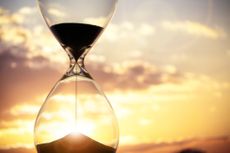Age Targets: How Much Should You Have Saved for Retirement By Now?
Retirement savings benchmarks can be helpful tools to prompt action ... IF they're realistic. See if your savings are at least in the right ballpark.


If you want to track your progress toward a goal, chances are there is an app that can do that for you. For example, you can track your steps, your packages, your diet and even your family’s whereabouts.
But when it comes to saving for your retirement, how much time do you spend tracking your progress? And at what point in your life should you start paying attention?
Retirement planning can be intimidating at any age — even more so early in your career. When retirement seems so far in the future, it’s hard to plan for it with so many competing priorities in the present. For example, in addition to your regular bills, you may have student loans to repay. Or you may be trying to save money to purchase a home or save for your kids’ college education.

Sign up for Kiplinger’s Free E-Newsletters
Profit and prosper with the best of expert advice on investing, taxes, retirement, personal finance and more - straight to your e-mail.
Profit and prosper with the best of expert advice - straight to your e-mail.
Still, it’s important to make steady progress toward saving, no matter what your age. Moreover, taking stock of where you stand can help you plan with more intention based on your situation.
So, I’m 35. What Should I Have Saved?
There is a lot of research showing that people tend to rely on approximations or rules of thumb when it comes to financial decisions.
With this in mind, many financial firms publish savings benchmarks that show the ideal levels of savings at different ages relative to an individual’s income. A savings benchmark isn’t a replacement for comprehensive planning, but it is a quick way to gauge whether you’re on track. It’s much better than the alternative some people use — blindly guessing! More importantly, it can act as a catalyst to take action and start saving more.
However, for the benchmark to be useful, it needs to be realistic. Setting the target too low can lead to a false sense of confidence; setting it too high can discourage people from doing anything. Articles on retirement savings goals have generated spirited discussion about the reasonableness of the targets.
Last year, my colleagues and I re-evaluated how to calculate achievable benchmarks. We started with the goal in mind: determining the amount of assets needed by age 65. While that number depends on a lot of factors, income is the biggest one. Since higher earners will get a smaller portion of their income in retirement from Social Security, they generally need more assets in relation to their income. We estimated that most people looking to retire around age 65 should aim for assets totaling between eight and 14 times their preretirement gross income.
From there, we identified savings benchmarks at other ages based on a reasonable trajectory of earnings and savings rates. We didn’t presume that everyone starts saving our recommended 15% of their income immediately upon receiving their first paycheck. Rather, our hypothetical investor starts saving 6% at age 25 and ramps savings up by 1 percentage point each year until reaching an appropriate level. We found that 15% of income per year (including any employer contributions) is an appropriate savings level for many people, but we recommend that higher earners aim beyond 15%.
A Look at the Benchmarks
Considering all this, here are some savings benchmarks for people in the following age groups:

| Investor's Age | Savings Benchmarks |
|---|---|
| 30 | Half of salary saved today |
| 35 | 1x to 1.5x salary saved today |
| 40 | 2x to 2.5x salary saved today |
| 45 | 2.5x to 4x salary saved today |
| 50 | 3.5x to 6x salary saved today |
| 55 | 5x to 8.5x salary saved today |
| 60 | 6.5x to 11x salary saved today |
| 65 | 8x to 14x salary saved today |
Key Assumptions: Household income grows at 5% until age 45 and 3% (the assumed inflation rate) thereafter. Investment returns before retirement are 7% before taxes, and savings grow tax-deferred. The person retires at age 65 and begins withdrawing 4% of assets (a rate intended to support steady inflation-adjusted spending over a 30-year retirement). Savings benchmark ranges are based on individuals or couples with current household income between $75,000 and $250,000. Target multiples at retirement reflect estimated spending needs in retirement (including a 5% reduction from preretirement levels), taxes and Social Security benefits based on the ssa.gov Quick Calculator. See additional details in Are My Retirement Savings On Track?
So, to answer the question, we believe having one to one and a half times your income saved for retirement by age 35 is a reasonable target. It’s an attainable goal for someone who starts saving at age 25. For example, a 35-year-old earning $60,000 would be on track if she’s saved about $60,000 to $90,000.
The Benchmarks for Those Closer to Retirement
The range gets wider as you get older, so we also provide more detailed estimates for people approaching retirement. This helps someone find a realistic target based on age and marital status, which affects Social Security benefits.

How to Stay on Track
The point of benchmarks isn’t to make you feel superior or inadequate. It’s to prompt action, coupled with a guidepost to inform those actions, even if that means staying the course. If you’re not on track, don’t despair. Focus less on the shortfall and more on the incremental steps you can take to rectify the situation:
- Make sure you are taking advantage of the full company match in your workplace retirement plan.
- If you can increase your savings rate right away, that’s ideal. If not, gradually save more over time.
- If you have a company retirement plan that enables automatic increases, sign up.
- If you are struggling to save, many employers offer financial wellness programs or other tools that can help with budgeting and basic finances.
Use these savings benchmarks to get more comfortable with planning for retirement. Then go beyond the rule of thumb to fully understand your potential retirement expenses and income sources. Beyond your savings, think about what you are saving for and how you envision spending your time after years of hard work. After all, that’s the reason why you are saving in the first place.
Get Kiplinger Today newsletter — free
Profit and prosper with the best of Kiplinger's advice on investing, taxes, retirement, personal finance and much more. Delivered daily. Enter your email in the box and click Sign Me Up.

Roger Young is Vice President and senior financial planner with T. Rowe Price Associates in Owings Mills, Md. Roger draws upon his previous experience as a financial adviser to share practical insights on retirement and personal finance topics of interest to individuals and advisers. He has master's degrees from Carnegie Mellon University and the University of Maryland, as well as a BBA in accounting from Loyola College (Md.).
-
 The Rule of 1,000 Hours in Retirement
The Rule of 1,000 Hours in RetirementFor retirees, the rule of 1,000 hours brings intention and clarity to your day. Because time is the most valuable thing you can spend.
By Jacob Schroeder Published
-
 Little-Known Ways to Guard Your Retirement Income
Little-Known Ways to Guard Your Retirement IncomeIs your retirement income safe if stocks continue to plummet? Most retirees don't know these reliable options to limit their market exposure.
By Jacob Cornell Published
-
 Little-Known Ways to Guard Your Retirement Income
Little-Known Ways to Guard Your Retirement IncomeIs your retirement income safe if stocks continue to plummet? Most retirees don't know these reliable options to limit their market exposure.
By Jacob Cornell Published
-
 Three Warning Signs Your Investments Are (Needlessly) Too Risky
Three Warning Signs Your Investments Are (Needlessly) Too RiskyAll investments come with risk, but the secret is to take only enough risk to get you to your specific savings goals — and no more than that.
By Eric Roberge, Certified Financial Planner (CFP) and Investment Adviser Published
-
 His Employees Don't Work 'For' Him, But 'With' Him
His Employees Don't Work 'For' Him, But 'With' HimWhile it might not seem that way, there are indeed employers out there who value the relationships they have with their employees. Here's an example.
By H. Dennis Beaver, Esq. Published
-
 Reduce Your Retirement Tax Risk With the Three-Bucket Strategy
Reduce Your Retirement Tax Risk With the Three-Bucket StrategySplitting retirement funds into three buckets with distinct tax treatments can help you avoid a nasty tax bill down the line. Here's how the strategy works.
By Bryan S. Slovon, Investment Adviser Published
-
 Financial Fact vs Fiction: This Roth Conversion Myth Could Cost You
Financial Fact vs Fiction: This Roth Conversion Myth Could Cost YouWhile some 'golden rules' stay in style forever, the financial landscape is constantly evolving. Here are five common myths to revisit (with more on the way).
By Scott McClatchey, CFP® Published
-
 Give Now or Leave an Inheritance? How to Balance the Options
Give Now or Leave an Inheritance? How to Balance the OptionsYou've saved enough money for retirement. But can you afford to give some to family or good causes — and when is best? These are the key points to consider.
By Deana Healy, CFP® Published
-
 How to Age-Proof Your Retirement Plan
How to Age-Proof Your Retirement PlanLongevity risk is a big threat to your retirement, but there are several strategies to protect yourself from running out of money, no matter how long you live.
By Nico Pesci Published
-
 Retirement Planning for Couples With a Generation Gap
Retirement Planning for Couples With a Generation GapDo you and your partner have different retirement timelines and attitudes to saving? It is possible to make plans together. This is how one couple did it.
By Phil Wright, Certified Fund Specialist Published